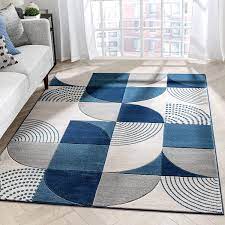Introduction
Modern carpets, a fusion of traditional craftsmanship and contemporary design, have taken center stage in interior design. These floor coverings are no longer mere functional elements; they are artistic statements that elevate the aesthetics of a space while providing comfort and warmth underfoot. In this article, we will delve into the world of modern carpet, tracing their history, exploring design elements, discussing materials, and highlighting their impact on today’s interior spaces.
The Evolution of Modern Carpets
The history of carpet-making dates back thousands of years to various cultures across the globe, each with its unique styles and techniques. However, the concept of modern carpets, as we know them today, emerged in the mid-20th century as design movements like Mid-Century Modernism and Minimalism gained popularity. These movements emphasized clean lines, simplicity, and a focus on function and form, influencing the aesthetics of modern carpets.
Over time, modern carpet design has continued to evolve, adapting to changing design trends, technological advancements, and an ever-expanding array of materials and techniques. Today, modern carpets represent a harmonious blend of tradition and innovation.
Design Elements in Modern Carpets
- Minimalist Geometry: Modern carpets often embrace minimalism, featuring clean lines, geometric patterns, and a neutral color palette. These designs create a sense of order and simplicity, making them versatile additions to various interior styles, from Scandinavian to industrial.
- Abstract Art: Many modern carpets draw inspiration from abstract art, utilizing unconventional shapes, asymmetry, and bold, vibrant colors. These carpets serve as artistic focal points within a room, encouraging viewers to engage with their unique patterns and textures.
- Texture Play: Modern carpets frequently experiment with texture, introducing elements like high pile, shag, or carved patterns. These tactile variations add depth and sensory richness to the carpet, making it a multi-sensory experience.
- Versatile Color Palettes: Unlike traditional carpets, which often adhere to specific cultural color schemes, modern carpets offer a wide spectrum of colors. This flexibility allows homeowners to select carpets that harmonize with their existing decor or make a bold visual statement.
Materials Used in Modern Carpets
Modern carpets leverage a diverse range of materials, each contributing its unique characteristics to the design. Some commonly used materials include:
- Wool: Wool carpets are celebrated for their durability, natural stain resistance, and luxurious texture. They offer excellent insulation properties and can withstand heavy foot traffic.
- Silk: Silk carpets exude opulence with their softness and luminous sheen. They often feature intricate, fine designs and are considered a symbol of luxury and refinement.
- Synthetic Fibers: Materials like polypropylene, nylon, and polyester have gained popularity due to their affordability, resistance to stains, and durability. These synthetic carpets are ideal for high-traffic areas.
- Natural Fibers: Carpets crafted from natural fibers such as jute, sisal, or seagrass are eco-friendly options that introduce a touch of nature to modern interiors.
Impact on Contemporary Interior Spaces
Modern carpets play a pivotal role in contemporary interior design by seamlessly marrying aesthetics and functionality. Here’s how they transform modern living spaces:
- Space Definition: Carpets act as visual anchors, defining specific areas within a room. They can delineate seating areas, create cozy reading nooks, or provide a central focus for a dining space.
- Aesthetic Enhancement: Modern carpets introduce texture, color, and pattern into a room, elevating its overall visual appeal. They contribute to the dynamic character of a space and enhance its aesthetic quality.
- Comfort and Acoustics: These carpets offer a soft and warm underfoot experience, enhancing comfort. Additionally, they help reduce noise, improving the acoustics of a room.
- Flexibility and Versatility: Modern carpets are versatile design elements that allow homeowners to update their spaces easily. Changing a carpet can refresh the room’s look without the need for a major renovation.
Conclusion
Modern carpets exemplify the synergy of art and function within interior design. They have the power to transform living spaces into visually captivating environments while providing comfort and practicality. Whether you seek a bold, abstract statement piece or a subtle, textured carpet that complements your decor, modern carpets offer a wealth of options to suit every taste and style. Embracing the versatility and artistry of modern carpets is a step towards elevating your living spaces to contemporary excellence, where every step is a walk on a masterpiece beneath your feet.







